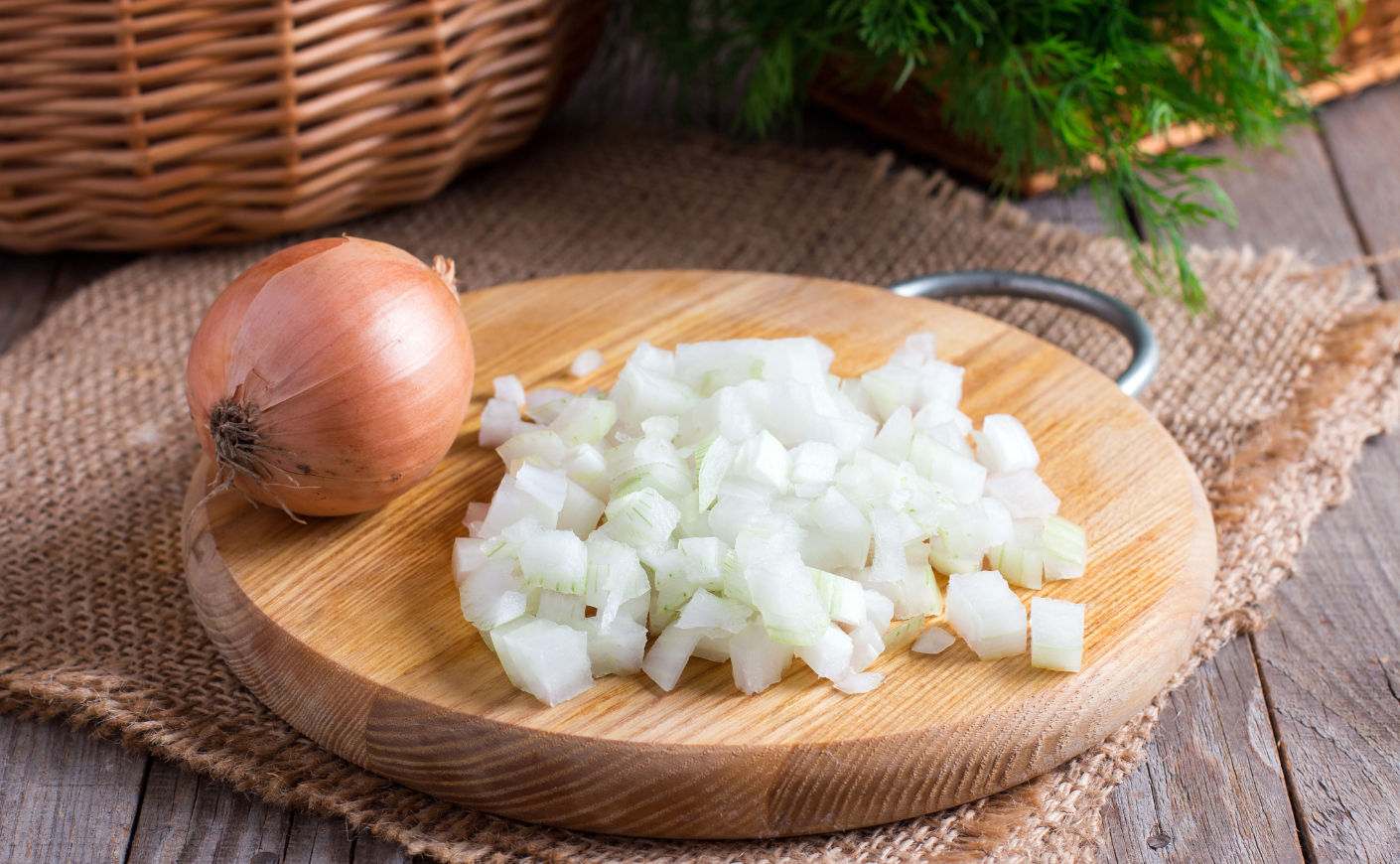The Centers for Disease Control has issued a food safety alert about packaged diced onions that have led to illnesses and hospitalizations across the United States.
The onions in question have so far caused dozens of cases of salmonella, and the CDC says it’s important to throw away any potentially risky bags of this product that may be in your home to avoid getting sick yourself. Here’s what you need to know about the government agency’s warning.
Which onions have been recalled?
The contaminated veggies are actually a handful of different fresh diced onion products produced by Gills Onions. These include select packages of the brand’s diced yellow onions (three-pound bags and eight-ounce cups), diced celery and onions (eight-ounce cups), diced mirepoix (10-ounce cups), and diced red onions (eight-ounce cups).
According to the Food and Drug Administration’s announcement of a voluntary recall for the products, the worrisome packages were were stamped with a use-by date of August 2023, so they’re no longer for sale in stores — and if you bought onions from this brand in September or October, those aren’t the same batch as what’s been contaminated with salmonella. But because many consumers may have frozen their onions to be used later, they could still be lurking in your home.
How widespread are the illnesses related to these onions?
The CDC’s report says the onions have caused 73 illnesses and 15 hospitalizations across 22 states. And while salmonella infections cause more than 400 deaths in the U.S. every year, the good news is that no fatalities have yet been reported as a result of this outbreak.
Cases of salmonella have popped up across America: So far, related illnesses have been reported in Arizona, California, Colorado, Georgia, Iowa, Idaho, Illinois, Indiana, Kentucky, Massachusetts, Michigan, Montana, North Dakota, New York, Ohio, Oregon, Tennessee, Texas, Utah, Virginia, Wisconsin, and Wyoming.
The highest concentration of sickness has been reported in California and Utah, which have seen 17 cases each. A distant third is Michigan, with six infections. Many of the states have so far reported only one or two cases, but those numbers could be deceiving.
“The true number of sick people in this outbreak is likely much higher than the number reported, and the outbreak may not be limited to the states with known illnesses,” the CDC report wanrs. “This is because many people recover without medical care and are not tested for salmonella. In addition, recent illnesses may not yet be reported as it usually takes 3 to 4 weeks to determine if a sick person is part of an outbreak.”
What should you do if you bought the contaminated onions?
Check your freezer and refrigerator to find out if you still have any of the bad batch of products on hand. If so, throw them away or return them to the store where you bought them. You definitely don’t want to eat them.
The CDC also recommends washing any cookware or surfaces that may have come into contact with the onions with hot, soapy water, or in the dishwasher.
What are the symptoms of salmonella?
The most common are fever, diarrhea, and stomach cramps. These effects can show up as quickly as six hours after ingesting a contaminated product, but it might also take as long as six days.
In some cases, the symptoms may turn severe, in which case it’s recommended that you contact a doctor. The CDC says you should be concerned if you’re experiencing the following:
- Diarrhea and a fever higher than 102°F
- Diarrhea for more than 3 days that is not improving
- Bloody diarrhea
- Extreme vomiting that prevents you from keeping liquids down
- Signs of dehydration, including:
- Minimal urination
- Dry mouth and throat
- Dizziness when standing up
People who do experience a severe infection can be treated with antibiotics, which typically clears things up within a week. Those with average, manageable symptoms are encouraged to drink plenty of fluids until their diarrhea clears up.
For more on how salmonella harms us and how to respond if you’ve come in contact with the bacteria, there’s plenty of helpful information from the CDC right here.









